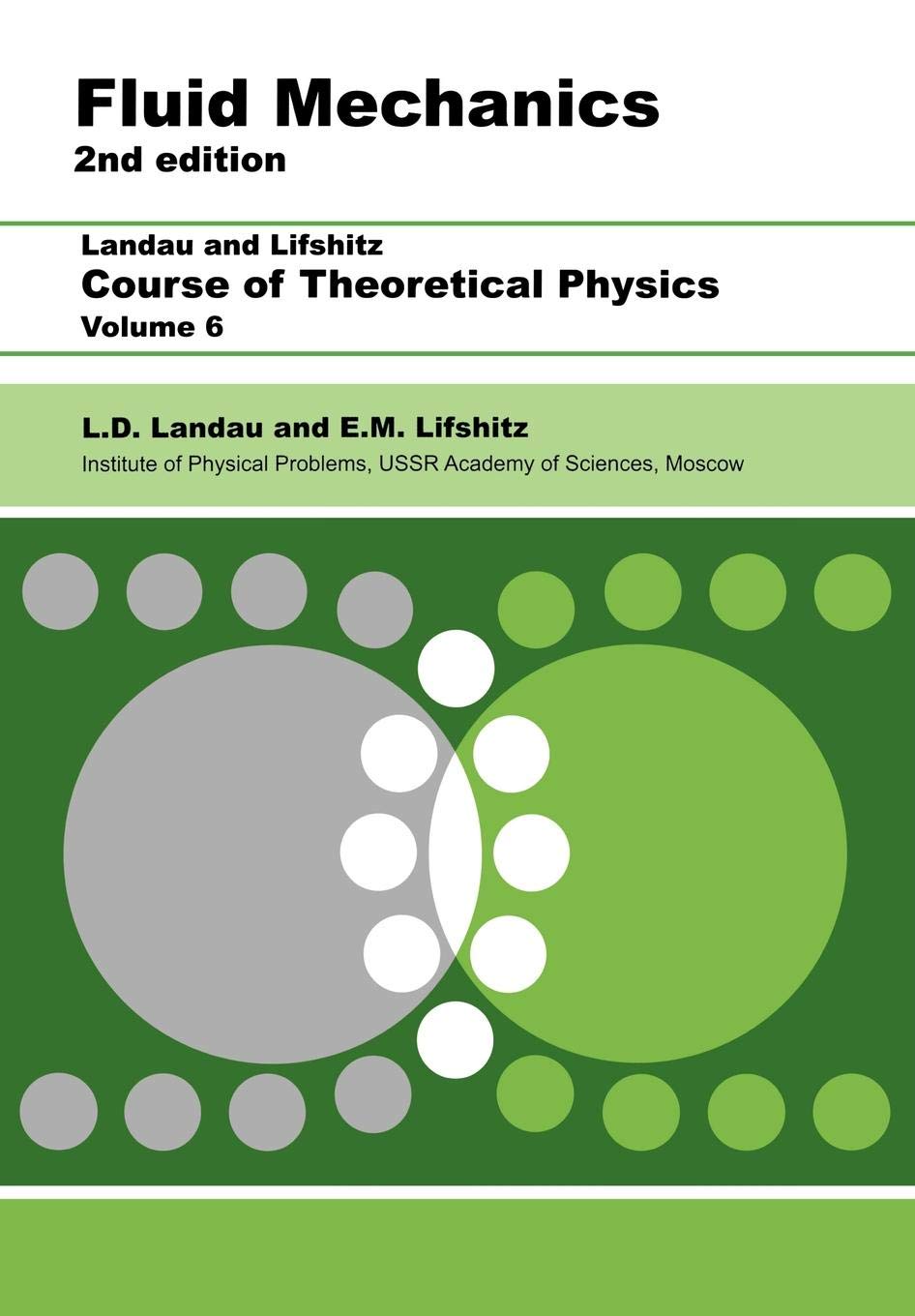Continuity equation
- Fluid Mechanics Unclassified

from 「Fluid Mechanics」: Landau, L.D. & Lifschitz, E.M.
The continuity equation.
Continuity equation
In fluid dynamics, the continuity equation states that the rate at which mass enters a system is equal to the rate at which mass leaves the system plus the accumulation of mass within the system.
\[ \pdv{\rho}{t} + \div(\rho\b{u}) = 0 \]
where $\rho$ is the density of the fluid, $\b{u}$ is the velocity of the fluid, and $t$ is time.
The continuity equation is a consequence of the conservation of mass, and we’ll derive the equation from the assumption now.
Derivation
We consider some volume $V_0$ of space. The change per unit time in the mass of fluid in this volume should be the same as the quantity flowing in unit time through the surface of the volume. Therefore, we can write as follows:
\[ \pdv{ }{t}\int_{V_0}\rho \dd{V} = -\oint_{\partial V_0}\rho\b{u}\cdot\d{\b{S}} \]
The surface integral can be transformed by the divergence theorem to a volume integral, thus:
\[ \pdv{ }{t}\int_{V_0}\rho \dd{V} = -\int_{V_0}\div(\rho\b{u}) \dd{V} \nl\;\nl \int_{V_0}\left[ \pdv{\rho}{t}+\div(\rho\b{u})\right] \d V = 0 \]
Since the equation must hold for any volume $V_0$, the integrand must vanish.
\[ \pdv{\rho}{t} + \div(\rho\b{u}) = 0 \]
Defining the vector $\b{j}$ as $\rho\b{u}$, we can write the continuity equation as:
\[ \pdv{\rho}{t} + \div\b{j} = 0 \]
Here $\b{j}$ is called the momentum density. Its direction is that of the motion of the fluid, while its magnitude equals the mass of fluid flowing in unit time through unit area perpendicular to the velocity.
Interpretation
Expanding the expression for the momentum density, we have:
\[ \pdv{\rho}{t} + \rho\div\b{u} + (\nabla\rho)\cdot\b{u} = 0 \]
We can simplyfy the equation by the material derivative,
\[ \frac{D}{Dt} = \pdv{ }{t} + \b{u}\cdot\nabla \]
we get the following equation.
\[ \frac{D\rho}{Dt} + \rho\nabla\cdot\b{u} = 0 \]
A change in the density over time should be proportional to the divergence of the velocity field. So if the fluid is incompressible, the divergence of the velocity field must be zero, which is expressed as:
\[ \nabla\cdot\b{u} = 0 \]
